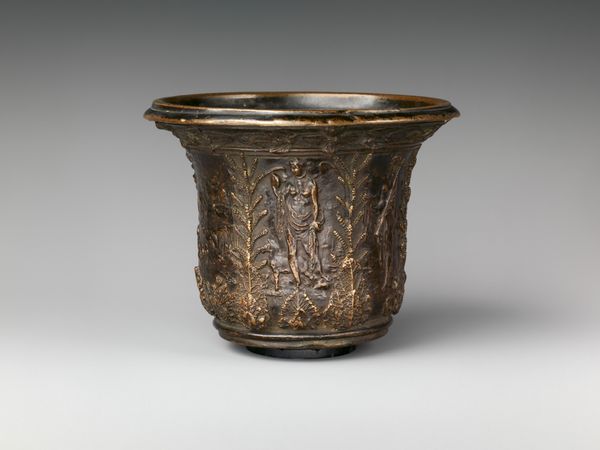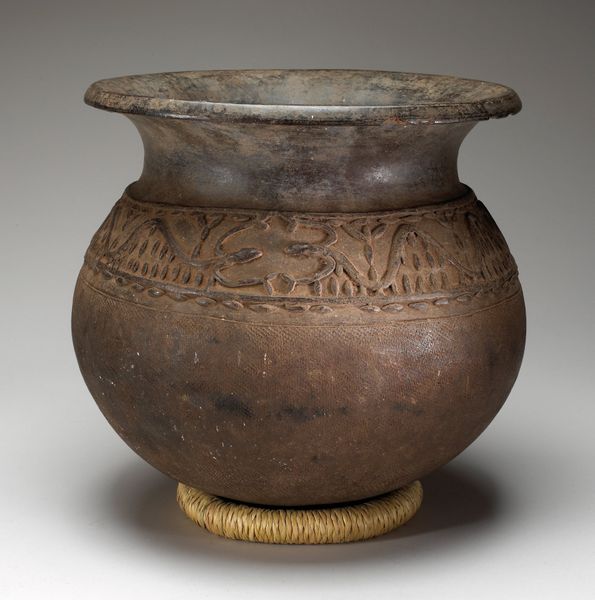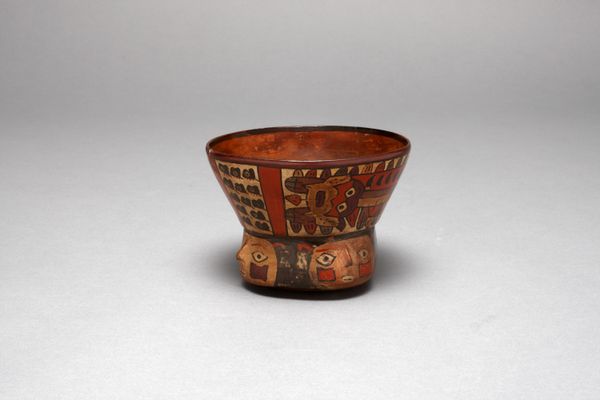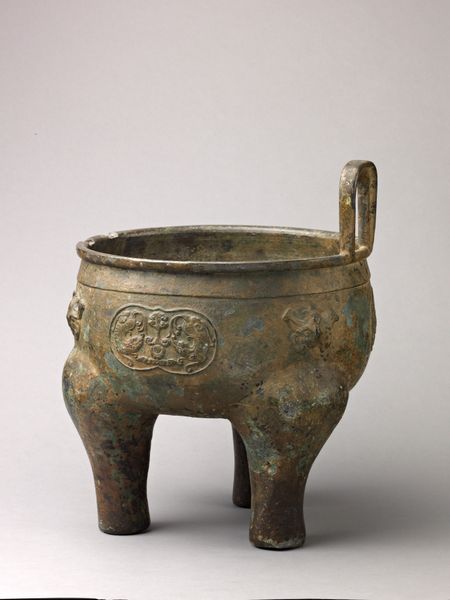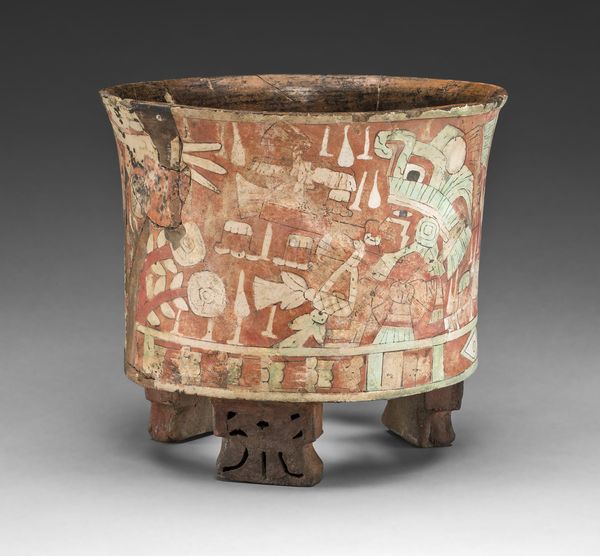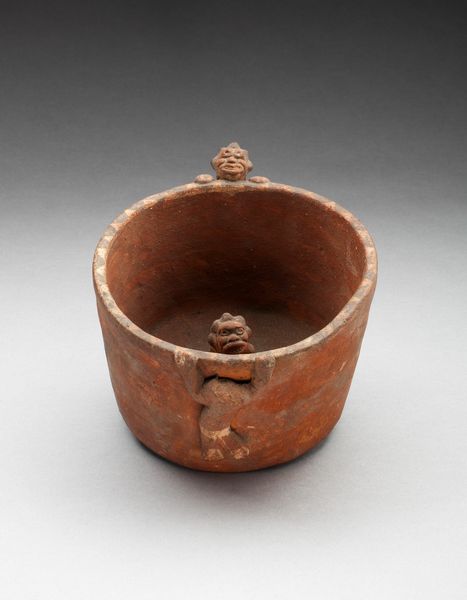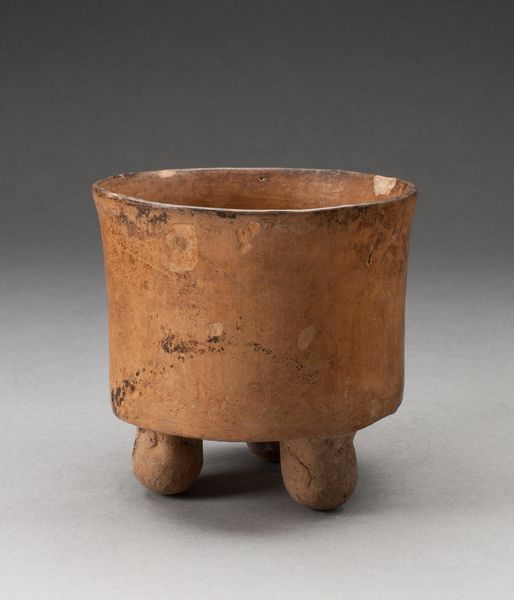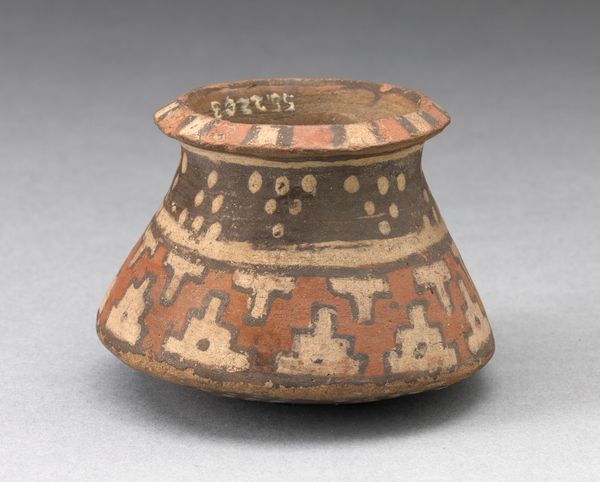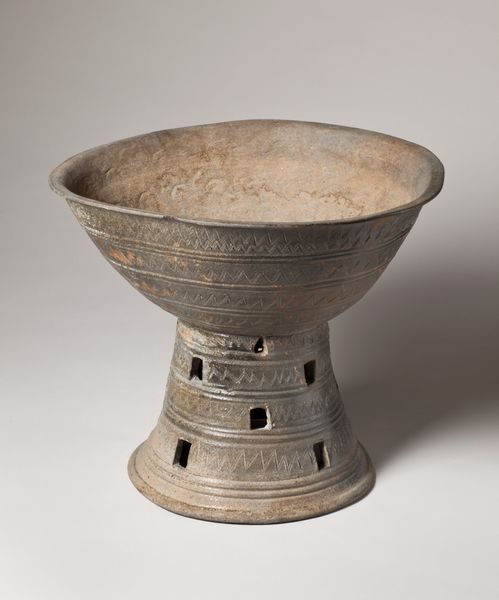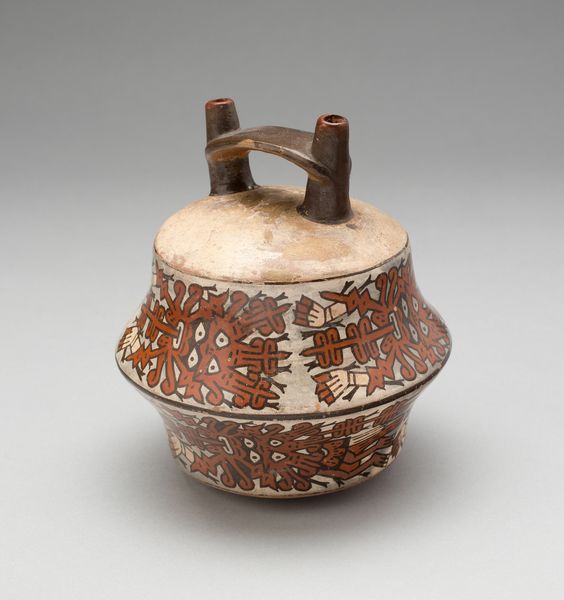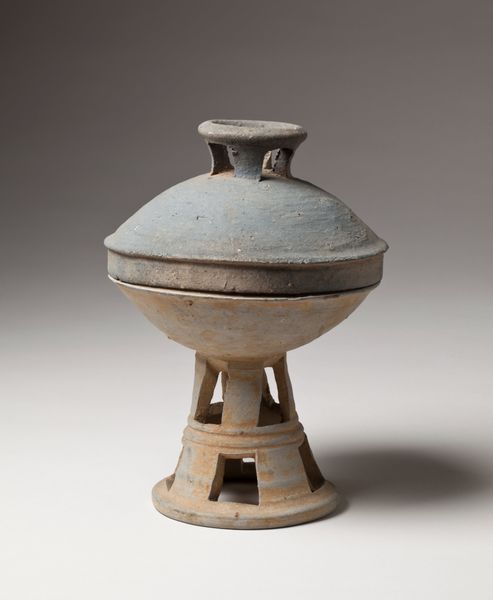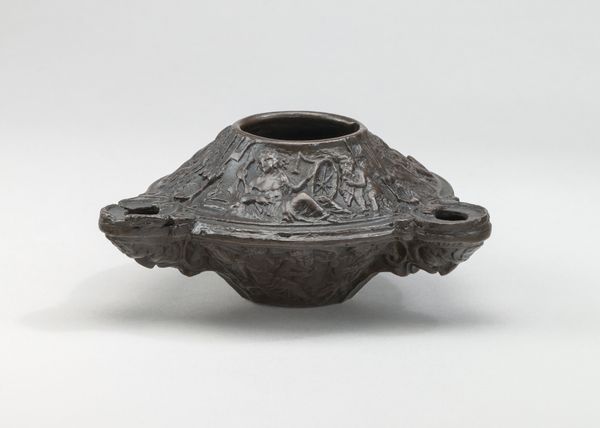
ceramic, earthenware, sculpture
#
pottery
#
sculpture
#
ceramic
#
form
#
earthenware
#
geometric
#
sculpture
#
ceramic
#
decorative-art
#
indigenous-americas
Copyright: Public domain
This is an Aztec vessel made of earthenware, probably around the 15th century. It stands on three legs and is decorated with glyphs. Notice the glyph on the square panel, resembling a reed or perhaps a stylized plant. These symbols are not mere decorations, but are deeply embedded with cultural and historical significance. Glyphs served as a way to record history, rituals, and astronomical events, preserving collective memory. Now, let us consider how such motifs appear across different times and places. Think of the Egyptian hieroglyphs, or the ancient Greek use of stylized floral patterns on pottery: these are not direct copies, but rather echoes of a fundamental human drive to represent and understand the world through symbols. The reed-like glyphs, passed down through history, have shifted in meaning, taking on new connotations depending on the culture and context. Consider its emotional or psychological aspect, as a powerful force engaging viewers on a deep, subconscious level. We see the non-linear, cyclical progression of this symbol resurfacing, evolving, and taking on new meanings in different historical contexts.
Comments
No comments
Be the first to comment and join the conversation on the ultimate creative platform.

